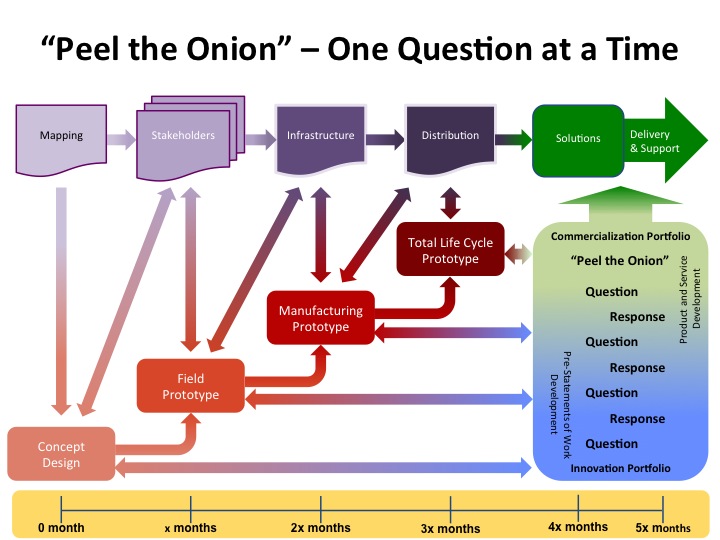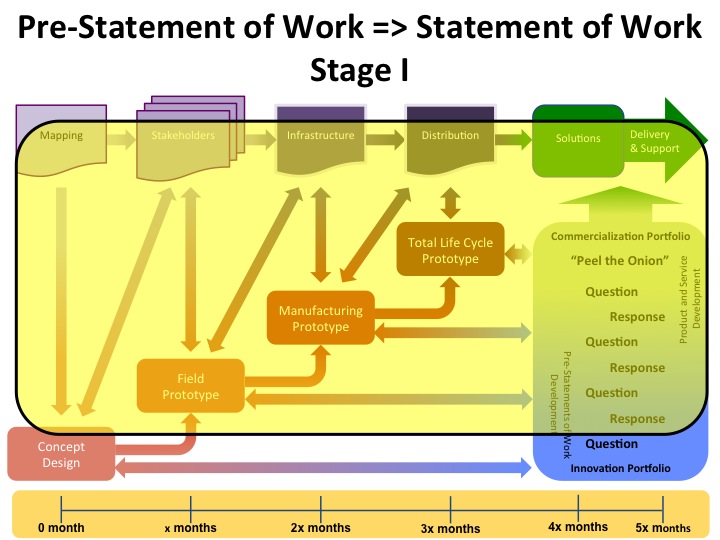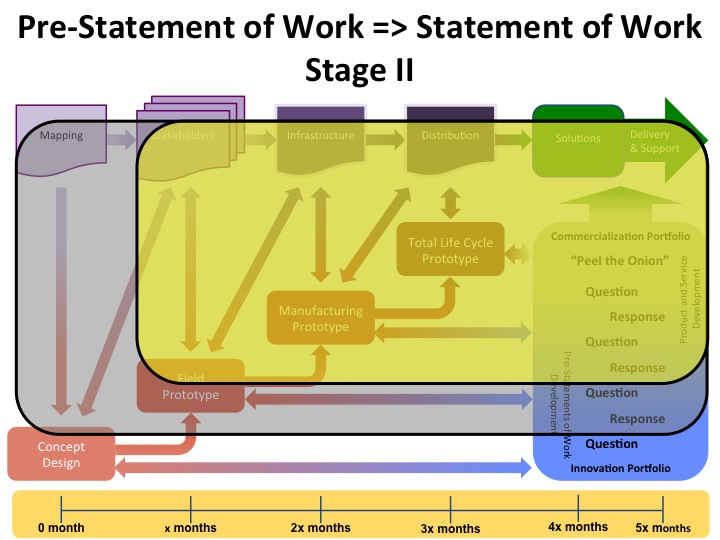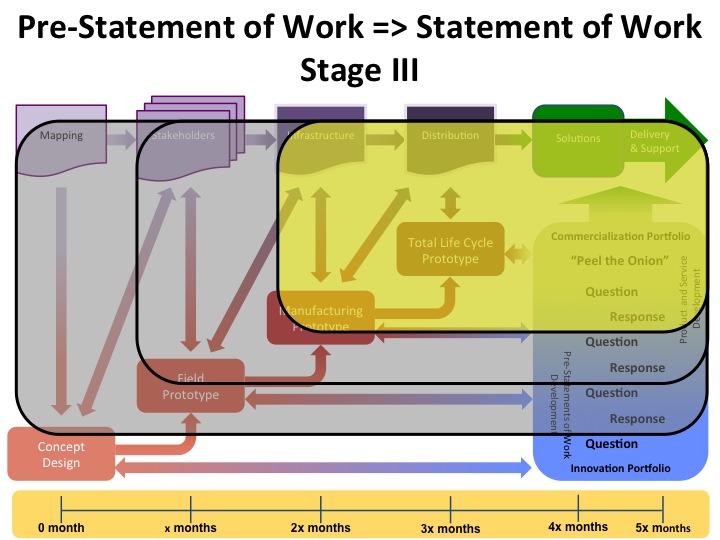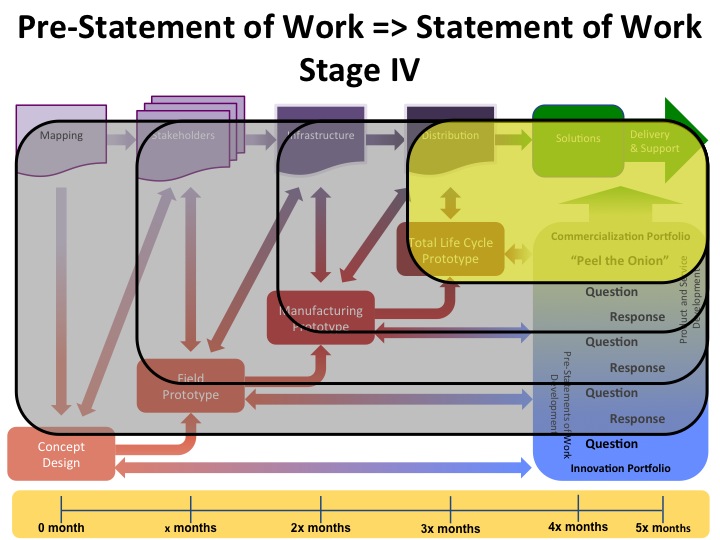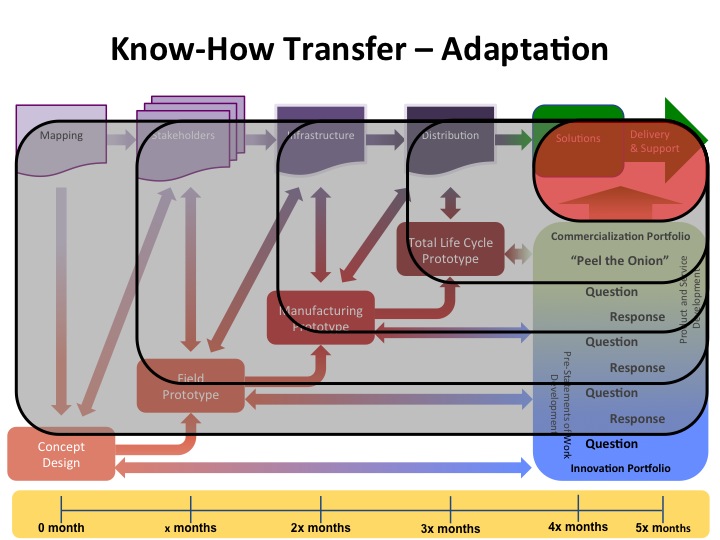Peel-the-Onion
Introduction to Peel the Onion
The article, Solution Development started with the questions: “Have you ever had such a clever idea that you couldn't imagine it would not be a success? Then, for whatever the reason, it just didn't develop as you thought it would - maybe not at all?” The article went on to posit the notion that the interplay between the concept and the context in which it develops is a major determinant in whether an idea evolves to becomes a valuable solution in the eyes of those who take delivery.
The transition from concept to commercialization occurs in stages with each one posing its own set of challenges. In many respects the innovator is on a quest in a well-crafted video game wherein the difficulty increases level by level. Just as some players don’t complete the quest despite repeated tries, some ideas just don’t see the light of day as solutions. One way to bypass the frustration associated with figuring out a particularly tough level in a game is to use a cheat sheet. The same holds true in the overcoming the hurdles in the path of solution development. The article, then, is an innovator’s cheat sheet.
The key to advance an idea is to ask and respond to questions. This process can be problematic. First, what question or set of questions should one ask given the current stage of development in which the idea finds itself? And second, what if one doesn’t hear or heed the response? Oftentimes innovators become so taken with their ideas at the outset that they start basking in the glory of anticipated success before there is cause to do so. Who needs to ask questions? They already know their ideas will work. Far worse, though, is to ask how one’s baby looks only to hear back from others that they find it quite ugly. In this situation, innovators may lie to themselves and say that others didn’t REALLY dislike it that much or they just won’t ask any more. So, if you’re an innovator who is willing to ask tough questions, receive less than complimentary feedback, and respond with resolve to keep moving forward, read on.
Figure 1 below offers a framework introduced in the Solutions Development article. Now, though, the block on the right shows a progression of preliminary statements of work that lead from one question and response dyad to another, stage by stage, through product and service development and on to commercialization.
In many respects this step by step approach is summarized by longstanding riddle, “How does one eat an elephant?” The answer, of course, is “One bite at a time!” Or one could consider discovering the path for an idea to become a solution as an onion which gets peeled one layer at a time in order to better absorb what one has learned thus far before going deeper, asking the next question, and taking the next step.
Peel the Onion-Stage 1
Each stage in the journey of an idea / concept through the "Innovation Portfolio" to the "Commercialization Portfolio" begins with a publicly presented pre-statement of work that poses key questions for consideration, notes why they are important, and outlines who will take what steps by when in order to address them. As the pre-SoW attracts collaborators, sponsors, and investors, they negotiate a formal statement of work that specifies the terms and conditions by which team members listed in the pre-SoW will exercise their roles and responsibilities to provide expected deliverables on schedule and within cost in exchange for compensation.
Returning to the analogy of a video game, Figure 2 below represents the onset of a quest whereupon the lead player has a role as innovator with a singular mission: convert an idea / concept into a viable solution for delivery to a market. The lay of the land represented by the yellow block may provide a generalized overview, but the initial conditions, cast of characters, and changing circumstances make the journey challenging despite previous experience and familiarity with the process.
As in the quest, the innovator needs a "map" upon which to note current position, evaluate progress, clarify roles and relationships with others one meets along the way, and identify resources required to continue. Accordingly, the first pre-SoW an innovator should consider would be for a map of the context in which the idea / concept will develop into a marketable solution. Such a map would relate to the geographic area where this development will occur and in so doing identify landmarks in terms of capital be they land, facilities, equipment, and infrastructure; potential customers, value / supply chain partners, collaborators, competitors, and advocates; and the systems, processes, and tools that enables them to function effectively as a cohesive whole.
A note about capital. Oftentimes, when one uses the term, "capital", it refers to money. While money is certainly a form of capital, there are other types that are equally important, if not more so depending on circumstances. Classification of capital can become quite extensive as in the description, Capital, by Guillaume Lebleu on P2P Foundation. For the purposes of this article, there are five forms of [[ http://www.forumforthefuture.org/project/five-capitals/overview%7Ccapital]]: human (individual), social (interactive), manufactured (produced or built), natural, and financial (multiple mediums of exchange). These will be explored in more detail in subsequent sections.
To summarize, start your quest by making a map. It will illustrate the evolutionary source-sink dynamics within natural and constructed ecosystems that hold sufficient wealth of resources, flows, and interconnections for you, the innovator, to bring your idea / concept to fruition as a valuable solution.
